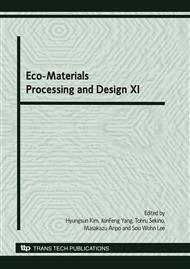p.272
p.276
p.280
p.284
p.288
p.292
p.296
p.300
p.304
The Development of Solid Fabric Filter for CSOs Treatment
Abstract:
The cost for nonpoint source in urban area tends to increase as it's distanced farther from the pollution source. Thus it's more effective to dispose of the pollution at the pollution source. It becomes more difficult when nonpoint source is flowed into the surface water by stormwater. In case of combined sewer, increasing stormwater on impermeable surface causes the Combined Sewer Overflows (CSOs) containing the high level of pollutants which runs into the water system through the storm overflow diverging tank without treatment process. A huge amount of CSOs is generated instantly and as it carries the pollutants on impermeable surface as well as the deposits in sewage pipe, it's necessary to develop the technology for treatment of CSOs. This study was intended to develop the solid fabric filter which will be suitable for treatment of CSOs and the characteristic and performance of solid fabric filter were evaluated.
Info:
Periodical:
Pages:
288-291
Citation:
Online since:
July 2010
Authors:
Price:
Сopyright:
© 2010 Trans Tech Publications Ltd. All Rights Reserved
Share:
Citation:


